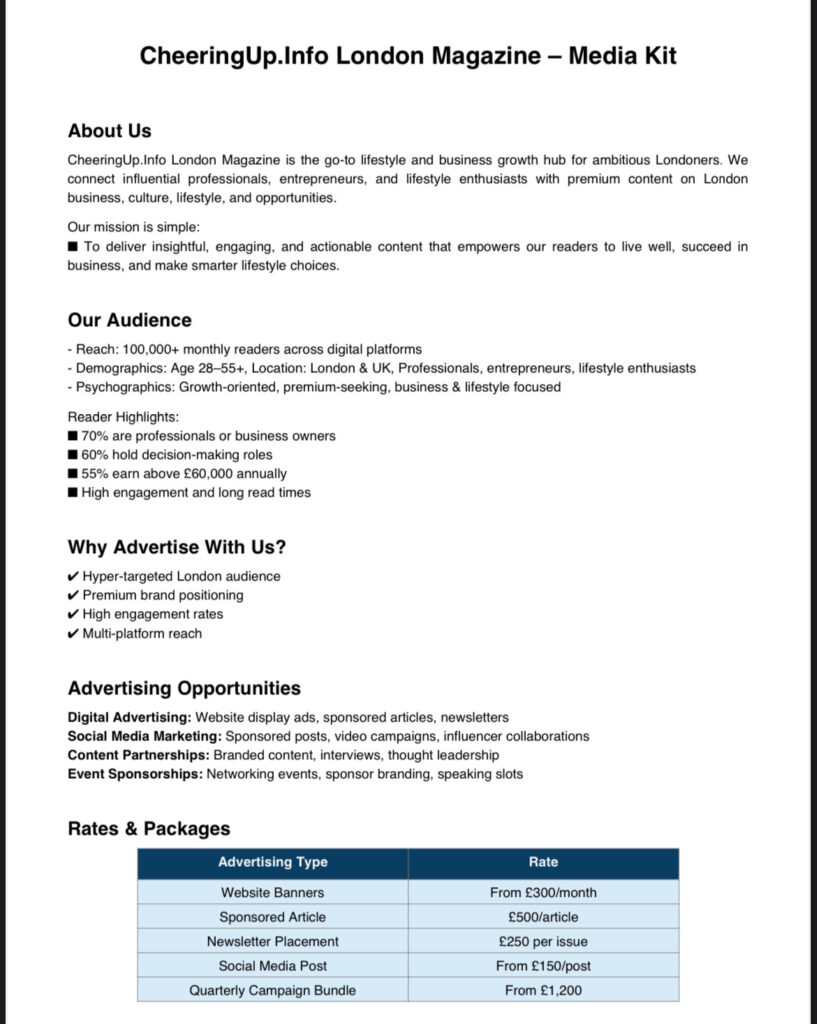An UK Tax Expert’s Guide to Minimising Crypto Capital Gains Tax (CGT) and Calculating Gains for 2025-2026
Welcome. It’s great that you’re taking the time to understand this before the end of the tax year. Capital Gains Tax on crypto can be complex, but by breaking it down, you can ensure you’re compliant with HMRC and minimise your tax bill.
In the UK, when you “dispose” of a crypto asset, you may be liable for CGT. A disposal is a broad term that includes:
- Selling crypto for fiat currency (e.g., GBP).
- Exchanging one crypto for another (e.g., Bitcoin for Ethereum).
- Using crypto to buy goods or services.
- Gifting crypto to anyone other than your spouse or civil partner.
The tax year we are focusing on is 2025 to 2026, which runs from April 6, 2025, to April 5, 2026.
How to Calculate the Purchase Price (Cost Basis) of Crypto You’ve Sold
This is the most critical and often confusing part of the calculation. The Proceeds - Cost Basis = Gain (or Loss)formula is simple, but HMRC has specific rules to determine which Cost Basis to use for a particular disposal. You can’t just pick the cheapest crypto you bought. You must follow these three “matching rules” in a strict order:
1. The Same-Day Rule
- If you sell a certain type of crypto (e.g., Bitcoin) on a specific day, you must first match that sale with any identical crypto you bought on the same day.
- The cost of those purchases becomes your cost basis for the amount sold.
- Example: You hold 1 BTC bought a year ago. On December 1, 2025, you buy 0.5 BTC for £10,000 and later sell 0.5 BTC for £12,000 on the same day. Your gain on this sale is calculated using the cost of the same-day purchase:
£12,000 (Proceeds) - £10,000 (Cost) = £2,000 Gain. The original 1 BTC you held is not relevant to this specific transaction.
2. The Bed and Breakfasting Rule (30-Day Rule)
- This rule is designed to prevent “tax-loss harvesting” where you sell an asset to realise a loss and then immediately buy it back to keep your position.
- If you sell a crypto asset and then buy back an identical asset within the next 30 days, you must match the cost of this new acquisition to the earlier sale.
- Example: On January 10, 2026, you sell 1 ETH for £2,500 (which you originally bought for £3,000). On January 15, you re-buy 1 ETH for £2,600. The sale on January 10 is matched to the purchase on January 15, not your original cost. Your loss is calculated as:
£2,500 (Proceeds) - £2,600 (Cost) = -£100 Loss. The original £3,000 cost is not used for this calculation.
3. The Section 104 Pooling Rule
- This is the general rule that applies to all disposals not covered by the first two rules.
- For each type of crypto you own (e.g., Bitcoin, Ethereum), you have a “pool” of assets. The
pooled allowable costis the total cost of all identical assets you’ve ever bought, with their costs added together. - When you dispose of crypto from this pool, the cost basis is the average cost per unit in the pool.
- Example:
- You buy 1 BTC for £20,000 (Pool: 1 BTC, Cost: £20,000)
- You buy another 2 BTC for £40,000 (Pool: 3 BTC, Cost: £60,000)
- Your average cost per BTC is now
£60,000 / 3 BTC = £20,000. - You later sell 1.5 BTC for £35,000. Your cost basis for this sale is
1.5 BTC x £20,000 (average cost) = £30,000. - Your gain is
£35,000 (Proceeds) - £30,000 (Cost) = £5,000 Gain.
The process is to apply the rules in order (Same-Day, then 30-Day, then Section 104 Pool) for every disposal to find the correct cost basis.
Proof of Gains: What HMRC Needs
HMRC expects you to maintain a comprehensive and verifiable record of your crypto activities. If they open an inquiry, you must be able to prove your calculations. This is why meticulous record-keeping is non-negotiable.
For each transaction, you should keep the following information:
- Date and time of the transaction.
- Type of transaction (e.g., Buy, Sell, Exchange, Spend).
- Asset and quantity (e.g., 1 BTC).
- Value in GBP at the time of the transaction (e.g., £25,000).
- Transaction fees paid (in crypto and/or GBP).
- Cumulative balance of each crypto you hold.
- Source of your data: Keep copies of CSVs from exchanges, wallet transaction histories, and bank statements showing fiat deposits/withdrawals.
Due to the complexity of the matching rules, especially with frequent trading, a crypto tax software (e.g., Koinly, Crypto Tax Calculator) is highly recommended. These tools can import your data, apply the HMRC rules automatically, and generate the required reports.
How to Minimise Your Crypto CGT for 2025-2026
1. Maximise Your Annual Exempt Amount (AEA)
- For the 2025-2026 tax year, the CGT Annual Exempt Amount is £3,000 per person.
- This is the amount of gain you can make tax-free. If you make gains of £2,900, your tax bill is £0. If you make gains of £5,000, you only pay tax on the £2,000 above the allowance.
- Strategy: Plan your disposals to stay within this limit each tax year. If you have a large portfolio, consider selling off a portion of your gains each year to use up the allowance. The AEA cannot be carried forward, so “use it or lose it.”
2. Employ Tax-Loss Harvesting
- This is a powerful strategy to reduce your tax bill.
- If you have crypto assets that are currently worth less than you paid for them, you can sell them to “realise” a capital loss.
- These losses can be used to offset any capital gains you’ve made in the same tax year. If your total losses exceed your total gains, you can carry forward the excess losses indefinitely to offset gains in future years.
- Strategy: Before the end of the tax year (April 5, 2026), review your portfolio. If you have a realised gain of £10,000 and an unrealised loss of £8,000 on a different asset, you could sell the losing asset to offset your gain, reducing your taxable gain to just
£10,000 - £8,000 = £2,000. This is below the £3,000 AEA, meaning no CGT.
3. Transfer Assets to a Spouse or Civil Partner
- Transfers of assets between spouses or civil partners are “no gain, no loss” transactions. This means they are exempt from CGT.
- The receiving spouse takes on the asset at the original cost basis.
- Strategy: If one partner has used their full £3,000 AEA, they can transfer assets to their partner, who can then sell them using their own £3,000 allowance. This effectively doubles the tax-free gain for the household to £6,000.
4. Be Mindful of Your Income and CGT Rates
- The CGT rate for crypto gains (above the AEA) depends on your total taxable income (salary, etc.).
- For the 2025-2026 tax year, the rates are:
- 18% for gains that fall within the basic rate income tax band (£12,571 to £50,270).
- 24% for gains that fall into the higher or additional rate bands.
- Strategy: If your income fluctuates, you may be able to time your disposals to a year when your income is lower to take advantage of the 18% rate.
Final Takeaways
- Don’t ignore it. HMRC has access to data from crypto exchanges and is actively pursuing non-compliance.
- Calculate meticulously. The matching rules are complex and require careful application.
- Keep excellent records. Your detailed transaction history is your best defence.
- Use your allowances. The AEA and tax losses are your most powerful tools for reducing your tax bill.
- Consider professional help. If your situation is complex, a UK tax specialist with crypto knowledge can be invaluable
Read more…
Maximise Your Crypto Gains: Top Strategies to Minimise UK CGT for 2025-26
Once you’ve mastered the art of calculating your gains, the next step is to master the art of legally and ethically reducing your tax bill. Here are the top strategies you can employ during the 2025-2026 tax year to minimise your Capital Gains Tax (CGT) on crypto disposals.
1. The Power of Your Annual Exempt Amount (AEA)
For the tax year 2025-2026, the Capital Gains Tax Annual Exempt Amount is £3,000. This is your most valuable tool. It means you can realise a total of £3,000 in capital gains across all your chargeable assets (including crypto) and pay absolutely no tax on it.
Strategy: Don’t let this allowance go to waste. If you have significant unrealised gains in your portfolio, consider making a strategic disposal before April 5, 2026, to use up your full £3,000 allowance. By spreading out your disposals over multiple tax years, you can significantly reduce your overall tax liability. Remember, this allowance is a “use it or lose it” benefit; it does not roll over to the next tax year.
2. Tax-Loss Harvesting: Turning Losses into Tax Savings
In the world of crypto, losses are as common as gains. Tax-loss harvesting is the process of deliberately selling a crypto asset that has fallen in value to “realise” a capital loss. This loss can then be used to offset any capital gains you’ve made in the same tax year.
Strategy: Review your portfolio before the end of the tax year. If you have a £5,000 gain from selling Ethereum and a £4,000 loss on another asset like Solana, you can sell the Solana to realise the loss. This reduces your net taxable gain to just £5,000 - £4,000 = £1,000, which is well within your £3,000 AEA. If your losses exceed your gains, you can even carry them forward to offset gains in future tax years.
3. Gifting Assets to Your Spouse or Civil Partner
This is a powerful and completely legal way to double your tax-free allowance. Transfers of assets between spouses or civil partners who are living together are “no gain, no loss” transactions for CGT purposes.
Strategy: If you have an asset with a large unrealised gain that would push you over your £3,000 AEA, you can transfer some of it to your spouse. They can then dispose of the asset and use their own £3,000 allowance. This effectively allows the household to realise a total of £6,000 in tax-free gains.
4. Be Strategic with Your Income Tax Band
The rate of CGT you pay on gains above your £3,000 allowance depends on your total taxable income (salary, etc.).
- If your total taxable income plus your taxable gains are within the basic rate band (up to £50,270 for 2025-2026), your CGT rate on crypto gains is 18%.
- If your total taxable income plus your taxable gains pushes you into the higher or additional rate tax bands, your CGT rate on crypto gains is 24%.
Strategy: If you are a high earner, consider making disposals in a year when your income might be lower. You can also use other tax planning methods, such as making pension contributions, to lower your taxable income and keep your crypto gains within the lower 18% CGT band.
How Do I Calculate and Reduce My Crypto Tax Bill in the UK?
Navigating the world of crypto tax in the UK can feel like a minefield, but it all comes down to two key steps: calculating your gain and then applying legal strategies to reduce your tax bill. Here’s a clear, step-by-step guide to both.
Part 1: Calculating Your Gain (or Loss)
For HMRC, a “disposal” of a crypto asset triggers a potential Capital Gains Tax (CGT) event. A disposal is not just selling for cash; it’s also swapping one crypto for another or using it to buy goods.
To calculate your gain, you must find the difference between your “proceeds” and your “cost basis.”
Proceeds−Cost Basis=Gain (or Loss)
This seems simple, but the challenge lies in correctly identifying the “cost basis” of the crypto you sold. You cannot simply choose the lowest purchase price to minimise your tax. HMRC has strict matching rules you must follow in this specific order:
- Same-Day Rule: Any crypto you sell on a specific day must be matched with any identical crypto you bought on that same day. The cost of those same-day purchases becomes your cost basis.
- 30-Day “Bed and Breakfasting” Rule: If you sell a crypto asset and then buy an identical one within the next 30 days, you must use the cost of the new purchase as the cost basis for the earlier sale. This prevents you from selling an asset to book a loss and then immediately buying it back.
- Section 104 Pooling Rule: This is the default rule. After applying the first two rules, any remaining crypto you sell is matched against a “pool” of all your remaining identical assets. The cost basis for the disposal is the average cost of all the assets in that pool.
Part 2: Reducing Your Tax Bill for 2025-26
Once you’ve calculated your total gains for the tax year, you can apply these proven strategies to minimise your tax bill.
Utilise Your Annual Exempt Amount (AEA)
For the 2025-2026 tax year, the AEA is £3,000. This is the amount of gain you can make from all your chargeable assets (not just crypto) without paying any tax. If your total gains are £2,999, your tax bill is £0. If they are £5,000, you will only pay tax on £2,000. It is crucial to use this allowance each year, as you cannot carry it forward.
Harvest Your Losses to Offset Gains
This is a powerful strategy. If you have assets that have fallen in value, you can sell them to “realise” a capital loss. This loss can then be used to directly offset any capital gains you have made. If your losses exceed your gains, you can carry the excess loss forward to use against gains in future tax years.
Transfer Assets to a Spouse or Civil Partner
Transfers of assets between spouses or civil partners are exempt from Capital Gains Tax. This “no gain, no loss” rule means you can transfer an asset with a large unrealised gain to your partner. They can then sell it and use their own £3,000 AEA, effectively allowing the household to make £6,000 in tax-free gains.
Consider Your Income Tax Rate
The rate of CGT you pay depends on your total taxable income. For the 2025-2026 tax year, the rates on crypto gains above the AEA are 18% if you are a basic rate taxpayer and 24% if you are a higher or additional rate taxpayer. By managing your taxable income through other means (like pension contributions), you may be able to keep your gains in the lower tax bracket.
Understanding the Three Golden Rules for Calculating Your Crypto Cost Basis
When you dispose of crypto, calculating your gain or loss requires you to determine the “cost basis”—the original purchase price in pounds sterling. It’s not as simple as picking a price you like; HMRC has a specific, three-step hierarchy that you must follow for every single transaction. Ignoring these rules could lead to an incorrect tax calculation and potential penalties.
1. The Same-Day Rule
This is the first rule you must apply. If you buy and sell the same type of crypto on the same day, you must match those transactions. All the tokens you acquired that day are treated as a single transaction, and all tokens you disposed of are also treated as a single transaction. The cost of the same-day acquisitions is used as the cost basis for the same-day disposals. Any remaining assets or disposals then move on to the next rule.
2. The 30-Day “Bed and Breakfasting” Rule
This rule is designed to prevent you from selling an asset to realize a loss and then immediately buying it back to maintain your position. If you sell crypto and then acquire an identical asset within the next 30 days, you must use the cost of the new acquisition as your cost basis for the earlier disposal. This rule overrides the Section 104 Pool and is a critical point to remember, especially if you plan to re-buy a crypto after a dip.
3. The Section 104 Pooling Rule
This is the default rule for all disposals not covered by the first two rules. Think of this as a single “pool” for each type of crypto you own. Every time you acquire a crypto asset that doesn’t fall under the same-day or 30-day rules, it’s added to this pool. The cost basis for the pool is the average cost per unit. When you sell assets from this pool, the cost basis is the average price of all the assets within it.
For example, if your Section 104 pool has 2 BTC with a total cost of £30,000, your average cost is £15,000 per BTC. If you then sell 0.5 BTC, your cost basis for that disposal is 0.5 BTC x £15,000 = £7,500.
Disclaimer: This post is for educational purposes only and does not constitute financial or tax advice. The information is a simplified overview of complex tax rules and should not be relied upon as a substitute for professional advice. Tax laws can change, and your individual circumstances will affect your tax obligations. You should consult a qualified and regulated financial or tax advisor who specialises in cryptocurrency to discuss your specific situation. The author Keith Lewis, C&C Associates and CheeringUp.info do not accept any liability whatsoever for any loss or damage caused by the use of this information.
#UKCryptoTax #CapitalGainsTax #HMRC #CheeringUpInfo #CheeringUpTV
UK Crypto Capital Gains Tax 2025-26: A Beginner’s Guide to Minimising Your Tax Bill















